What's New
Displaying results 4041 - 4050 of 4052
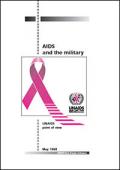
Resource | Publications,
Military personnel are a population group at special risk of exposure to sexually transmitted diseases (STDs), including HIV. In peace time, STD infection rates among armed forces are generally 2 to 5 times higher than in civilian populations; in time of conflict the difference can be 50 times higher or more. Paradoxically — and fortunately — strong traditions of organization and discipline give the military significant advantages if they move decisively against HIV/AIDS.
Recently, comparative studies of sexual behaviour in France, the UK and the USA showed that military personnel (both career and conscripted personnel) have a much higher risk of HIV infection than groups of equivalent age/sex in the civilian population. Armed forces in other parts of the world reflect the same phenomenon. A 1995 estimate of HIV in Zimbabwe, for instance, places the infection rate for the armed forces at 3 to 4 times higher than the level in the civilian population.
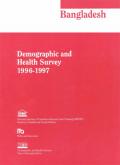
Resource | Publications,
The 1996-97 Bangladesh Demographic and Health Survey (BDHS) is a nationally-representative survey of 9,127 ever-married women age 10-49 and 3,312 currently married men age 15-59. The BDHS was designed to provide information on levels and trends of fertility, family planning knowledge and use, infant and child mortality, and maternal and child health and nutrition. Fieldwork for the BDHS took place from early November 1996 to mid-March 1997.
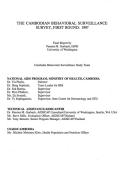
Resource | Publications,
The purpose of the Behavioral Surveillance Survey (BSS) is to measure how behavior that is risky for STD/HIV changes in the Cambodian population over time. The BSS will show if sexual behavior in Cambodia is changing across different groups, which will help to understand if the prevention programs are working.
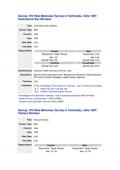
Resource | Data Sheets,
Sections of the final report cover: Background Information, Sexual Behavior, STD and HIV/AIDS Knowledge, STD Health Seeking Behavior.
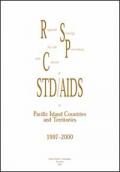
Resource | Publications,
The HIV and AIDS pandemic has created impact on societies like no other past disease. The virus knows no social, ethnic, gender, economic or cultural boundaries. It has caused devastation in many countries in the world, particularly where poverty, crowding and poor human and economic development have provided an ideal environment for the virus to take hold and for AIDS to develop. AIDS is now one of the endemic diseases of the majority of sub-Saharan African countries and is spreading rapidly throughout South-East and South Asia.
This document will be presented for endorsement to the governing body of SPC, the South Pacific Conference, as an indication of support for a coordinated, collaborative and appropriate response to HIV/AIDS and STD in the Pacific Islands countries and territories. However, the strategy is only useful if the information is used to guide activities.
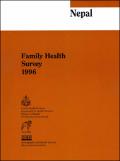
Resource | Publications,
The 1996 Nepal Family Health Survey (NFHS) is a nationally representative survey of 8,429 evermarried women age 15-49. The survey is the fifth in a series of demographic and health surveys conducted in Nepal since 1976. The main purpose of the NFHS was to provide detailed information on fertility, family planning, infant and child mortality, and matemal and child health and nutrition. In addition, the NFHS included a series of questions on knowledge of AIDS.
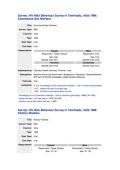
Resource | Data Sheets,
Sections of the final report cover: Background Information, Sexual Behavior, STD and HIV/AIDS Knowledge, STD Health Seeking Behavior.
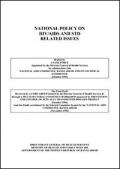
Resource | Laws and Policies,
The existence of HIV/AIDS/STD poses a serious challenge to human kind. To date, there is neither a vaccine nor a cure for AIDS. It is now well known that the presence of STDs predisposes the individual to HIV infection. Unfortunately, many STD cases go undiagnosed and untreated.
HIV/AIDS is a human development problem fueled by poverty, the inequality of certain sectors of society, and the presence of other STDs. As a result, the socio-cultural, economic as well as health determinants of the transmission of HIV/AIDS/STD must be addressed. In formulating a national policy for HIV/AIDS and STD related issued, the need arises to incorporate the above as policy concerns as part of an action strategy for future programmes.
A National Policy Document on HIV/AIDS and STD, under the auspices of the Bangladesh STD Prevention and Control Project, was compiled by a ‘Task Force’ in early 1995 with the Chairman of the Technical Committee of the National AIDS Committee as its convener.
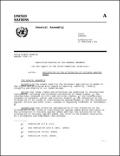
Resource | Laws and Policies,
For the purposes of this Declaration, the term "violence against women" means any act of gender-based violence that results in, or is likely to result in, physical, sexual or psychological harm or suffering to women, including threats of such acts, coercion or arbitrary deprivation of liberty, whether occurring in public or in private life.
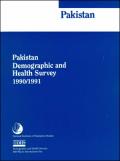
Resource | Publications,
The Pakistan Demographic and Health Survey (PDHS) was fielded on a national basis between the months of December 1990 and May 1991. The survey was carried out by the National Institute of Population Studies with the objective of assisting the Ministry of Population Welfare to evaluate the Population Welfare Programme and maternal and child health services. The PDHS is the latest in a series of surveys, making it possible to evaluate changes in the demographic status of the population and in health conditions nationwide. Earlier surveys include the Pakistan Contraceptive Prevalence Survey of 1984-85 and the Pakistan Fertility Survey of 1975.





